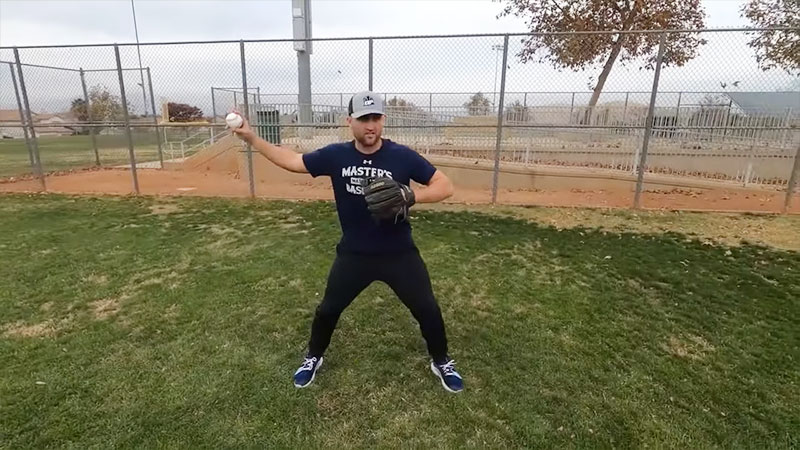Throwing with power and accuracy is a crucial skill in baseball or softball. Whether you’re an aspiring pitcher or simply want to improve your overall throwing ability, enhancing your throwing velocity and range can give you a competitive edge on the field.
However, achieving a stronger and more powerful throw requires a combination of factors, including strength, technique, and practice.
In this guide, we will explore various strategies and techniques to help you throw harder and farther. From strength training exercises and proper throwing mechanics to warm-up routines and long toss sessions, we will delve into the key aspects of developing a stronger and more accurate throw. So, stay focused.
How Do You Throw A Baseball Farther?
One must follow some guidelines to throw a baseball farther properly. To throw a baseball farther, follow the step-by-step instructions mentioned below.
Step 1: Warming Up
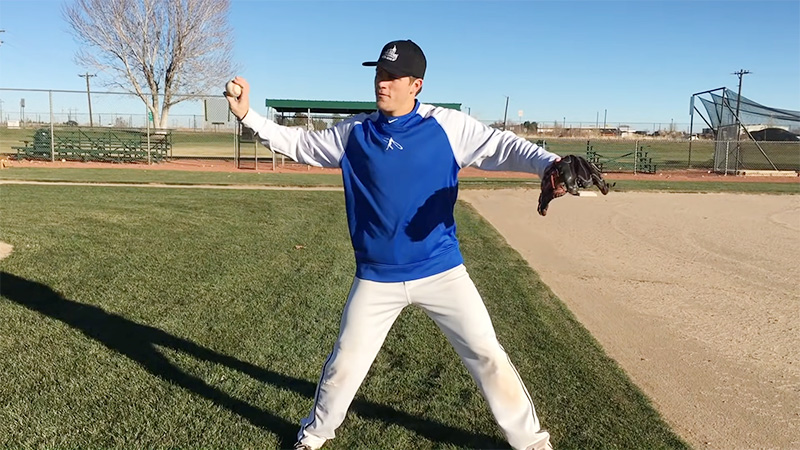
Start by performing a dynamic warm-up to prepare your body for throwing. This can include light jogging, arm circles, shoulder rotations, and stretches targeting your arms, shoulders, and core muscles. Warming up helps prevent injuries and enhances performance.
Step 2: Holding a Proper Grip
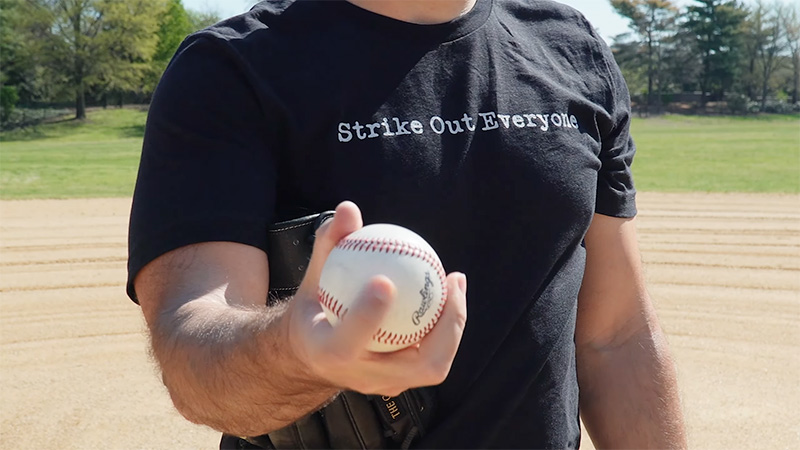
Hold the baseball with a four-seam grip, where your index and middle fingers are across the seams, and your thumb is underneath the ball. This grip provides better control and stability.
Step 3: Maintaining Stance and Balance
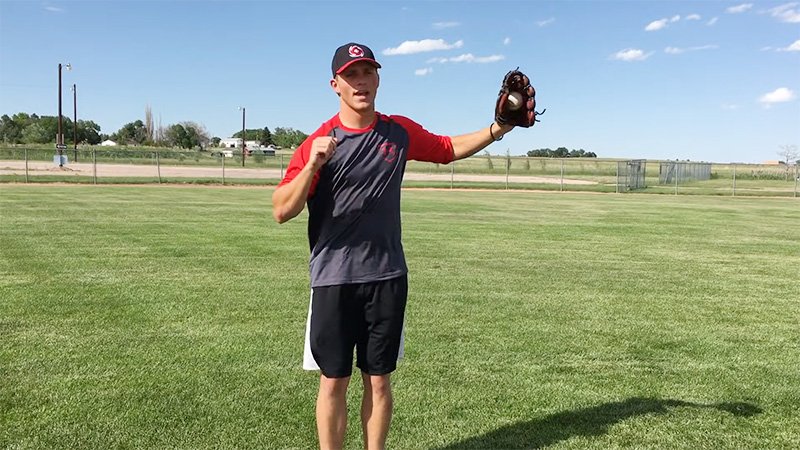
Stand with your feet shoulder-width apart, perpendicular to your target. Keep your weight evenly distributed on both feet to maintain balance throughout the throw. Bend your knees slightly to provide a solid base.
Step 4: Winding-Up
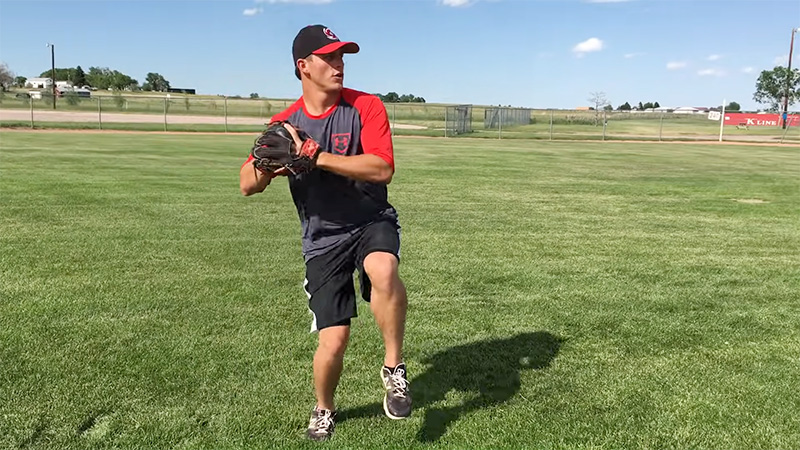
Initiate the throwing motion by winding up your throwing arm behind your body. Simultaneously, pivot your back foot, turning your hips and shoulders away from the target. This wind-up helps generate power for the throw.
Step 5: Ready to Stride and Transfer

As you unwind your body from the wind-up, take a long stride forward with your front foot, while keeping your head and eyes focused on the target. This stride allows for maximum power transfer from your lower body to your upper body.
Step 6: Having a Proper Arm Motion
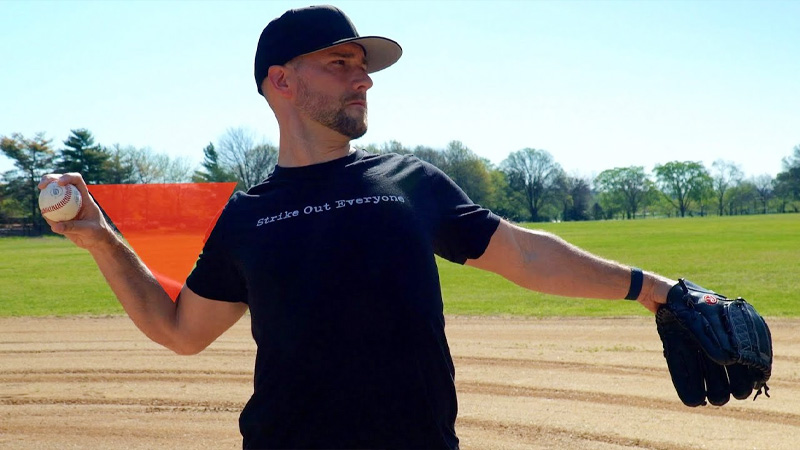
As your front foot lands, begin accelerating your throwing arm forward. Keep your elbow high and your forearm vertical, allowing for a longer lever arm and more power in the throw. Avoid dropping your elbow or slinging the ball sidearm, as it can limit distance and accuracy.
Step 7: Following Through
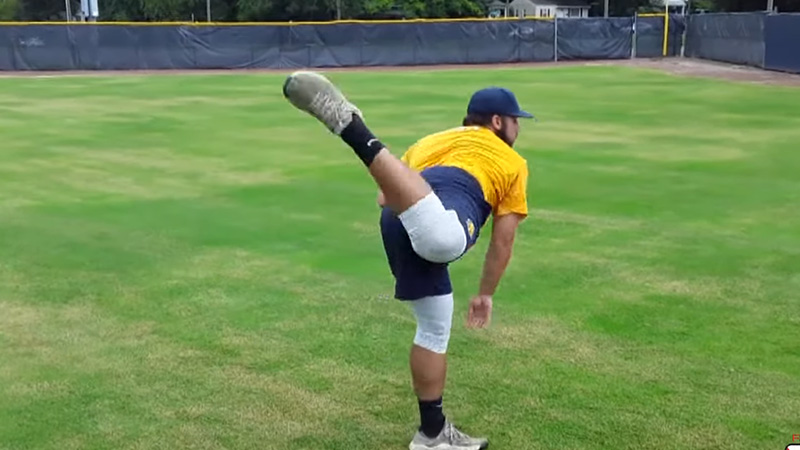
After releasing the ball, continue the throwing motion by following through with your arm. Extend your arm fully forward and finish with your throwing hand pointing toward the target. This follow-through helps maximize velocity and distance.
Practice Throwing a Baseball Farther
To maximize your throwing distance, focus on using proper form. Hold the baseball with a four-seam grip for control. Begin with a balanced stance, feet shoulder-width apart, knees slightly bent.
As you prepare to throw, bring your arm back and keep it perpendicular to the ground. Take a stride forward with your lead foot while rotating your hips and torso toward the target to generate torque.
This transfer of energy from your lower body to your throwing arm increases distance.
Learn to Use the Grip
Using proper form is crucial for generating power and accuracy in your throws. Hold the baseball with a four-seam grip, across the seams, for better control and minimal drag.
Begin with a balanced stance, feet shoulder-width apart, knees slightly bent, and weight evenly distributed. Bring your throwing arm back in a perpendicular position during the windup, storing potential energy for enhanced velocity.
As you stride forward with your lead foot, rotate your hips and torso toward the target, generating torque. This rotational movement transfers power from your lower body to your throwing arm, increasing the throwing distance.
Try to Improve Your Distance While Throwing
To enhance your throwing distance, focus on strengthening your throwing arm with targeted exercises like shoulder presses, dumbbell curls, and wrist curls. Maintain shoulder mobility through stretching and exercises.
A strong core transfers power effectively, so include planks, Russian twists, and medicine ball throws. Flexibility is crucial, so incorporate shoulder stretches for a smooth throwing motion.
To Stay in Shape for Throwing
Maintaining overall fitness and conditioning is crucial for optimal throwing performance. Focus on cardiovascular exercises like running, cycling, or swimming to enhance endurance.
Engage in strength training exercises targeting your legs, core, and upper body, such as squats, lunges, deadlifts, and overhead presses.
Agility drills like ladder drills and cone drills improve quickness and reaction time. Consume a balanced diet with lean proteins, complex carbohydrates, and healthy fats while staying hydrated for sustained energy levels.
By prioritizing fitness and conditioning, you can enhance your throwing ability and maximize your distance on the field.
Helpful Tips for Throwing a Baseball Further
Some very important tips for throwing a baseball farther are mentioned in the following part of this article. Have a glimpse of them real quick.
Focus on Proper Mechanics
Use correct form and technique, including a solid grip, a balanced stance, a strong windup, and proper rotation. Practice and reinforce these mechanics consistently.
Develop Arm Strength
Incorporate exercises that target your shoulder, arm, and back muscles. Strengthening these areas will help generate more power and velocity in your throws.
Work on Shoulder Mobility and Flexibility
Maintain good shoulder mobility through regular stretching and exercises. This will ensure a full range of motion and prevent injuries.
Strengthen Your Core
A strong core stabilizes your body and enhances the transfer of power from your lower body to your arm. Incorporate exercises such as planks, Russian twists, and medicine ball throws into your workout routine.
Increase Overall Body Strength
Focus on full-body strength training exercises like squats, lunges, deadlifts, and overhead presses. A stronger body translates to increased throwing power.
Practice Regularly
Consistent practice is key to improving your throwing distance. Regularly engage in long-distance throws and targeted drills to refine your technique and build muscle memory.
Seek Professional Guidance
Working with a coach or seeking guidance from a professional can provide valuable insights and help you fine-tune your throwing mechanics. They can also provide personalized tips and corrections.
Stay in Shape
Maintain overall fitness through cardiovascular exercises, agility training, and proper nutrition. Being in good physical condition enhances your endurance and performance on the field.
Don’t Neglect Recovery
Allow your body time to rest and recover between throwing sessions. Proper rest, hydration, and nutrition are essential for optimal performance and injury prevention.
Stay Mentally Focused
Believe in yourself and maintain a positive mindset. Visualize successful throws and focus on the task at hand. Mental preparation plays a significant role in achieving optimal results.
Throwing Mechanics Checklist for Baseball:
Aspects of Throwing Mechanics | Key Points |
Elbow Positioning | Maintain a compact and controlled elbow position during the cocking phase. Avoid excessive tension or extension. |
Arm Slot | Find a comfortable arm slot (e.g., high, 3/4, sidearm) and maintain consistency throughout the throwing motion. |
Pronation and Supination | Understand proper forearm pronation and supination during release to optimize ball movement and reduce arm stress. |
Timing | Develop a sense of timing and rhythm for a well-timed release point. |
Extension and Follow-through | Focus on extending the arm fully and maintaining a complete follow-through after release. |
Towel Drills | Practice towel drills to simulate the throwing motion, emphasizing proper arm path and extension. |
Long-Toss | Engage in long-toss sessions to work on arm action and release at different distances. Gradually increase intensity while maintaining mechanics. |
Plyometric Exercises | Include plyometric exercises like medicine ball throws and explosive push-ups to develop explosive arm speed and reinforce release mechanics. |
FAQs
Can I improve my throwing velocity by focusing solely on arm strength?
While arm strength is important, throwing velocity is influenced by various factors, including leg drive, core stability, and overall body mechanics.
It’s crucial to develop a strong foundation and incorporate proper technique and mechanics to maximize throwing velocity.
How can I identify flaws in my throwing technique?
Seeking feedback from coaches or experienced players is invaluable in identifying flaws in your throwing technique. They can provide insights, assess your mechanics, and offer guidance on areas for improvement.
Additionally, recording your throws and analyzing them can help you identify any potential flaws or inconsistencies.
Is it normal to have different arm slots or release points?
Yes, different arm slots and release points are common among pitchers and throwers. Each individual has their own natural throwing motion and release point that feels most comfortable and effective for them.
It’s important to find a consistent arm slot and release point that works best for you and optimizes your performance.
Are there specific exercises to prevent arm injuries related to throwing?
Yes, incorporating exercises that focus on shoulder stability, rotator cuff strengthening, and overall arm care can help prevent injuries related to throwing.
These exercises may include band exercises, shoulder mobility drills, and targeted strength training for the muscles surrounding the shoulder and elbow.
Should I focus more on accuracy or throwing velocity?
Both accuracy and velocity are essential for effective throwing. It’s important to strike a balance between the two. Initially, focus on establishing proper mechanics and accuracy.
As your technique improves, you can gradually work on increasing throwing velocity while maintaining accuracy.
Conclusion
Developing efficient and powerful throwing mechanics is essential for maximizing velocity, accuracy, and overall performance in baseball or softball.
Through a combination of strength training, proper technique, regular practice, and targeted exercises, athletes can enhance their throwing abilities.
By prioritizing strength and conditioning exercises that target the arms, shoulders, and core, athletes can improve their overall throwing power.
Remember, developing throwing skills takes time, patience, and dedication. So, we hope you got some useful information here related to the topic. Thank you for your time.

